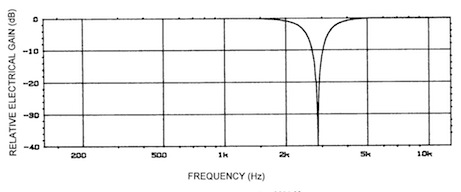Sudden hearing loss is one of the most disconcerting events in the lives of patients and audiology practices. As its name suggests, there is no warning nor is there any way to predict who is as risk. Typically, the audiologist meets the patient for the first time as the result of this sudden, potentially devastating event. There is no time to get to know one another.
The patient is terrified, probably has little if any knowledge of audiology, and enters the relationship is a decidedly defensive position. Unlike typical counseling and consultative selling that accompanies acquired hearing loss, the audiologist’s professional response in the case of sudden loss must be at once highly diagnostic, highly supportive, and immediate.
What to Do
In every case, a person who experiences sudden hearing loss needs to be seen by both an audiologist and an Ear-Nose-Throat (otolaryngologist) physician, preferably one who specializes in ears (otologist). Audiometric evaluation should be performed immediately, though the audiologist needs to exercise care in selecting which tests to perform from the standard battery, avoiding those that introduce extreme pressure (atmospheric and sound) into the ear canal.
The purpose of the hearing evaluation is two-fold: to measure how much hearing has been lost initially, and determine whether the sudden loss is due to malfunction of the hearing nerve or the middle ear. Hearing losses due to nerve damage are called “sensorineural;” those due to middle ear problems are “conductive.” Sudden sensorineural hearing loss (SSNHL) is a medical emergency.
As soon as the hearing loss is charted, the patient goes into the hands of the physician for assessment and a treatment plan. It is very important that serial audiograms are performed during the treatment and afterward, to determine whether recovery is present; also to determine whether post-medical treatment with amplification is in order, at which point the patient is handed back into the hands of the audiologist.
It is not possible to predict recovery time or degree of recovery. This is a time of great uncertainty for the patient as s/he waits and is handed back and forth between professions.
What Can Happen
In the past, different physicians and audiologists have used individualized approaches that depended on their experience, knowledge, and empathy. Not every audiologist has had much if any experience with sudden hearing loss. A provider with little or no exposure to SSNHL is not a good thing for the patient who experiences this traumatic event.
Alternatively, patients may end up in emergency rooms if this frightening event happens at a time which does not allow them quick access to hearing and ear specialists. ER physicians are not going to approach the problem by ordering an audiogram, if for no other reason than that audiologists are not part of the ER experience.
All of the above spells out why there is a need for standardization of protocols for handling patients who present with sudden hearing loss. In 2012, the American Academy of Otolaryngology published a Clinical Practice Guideline for Sudden Hearing Loss as a journal supplement. It is summarized here:
KEY POINTS IN THE GUIDELINE
Among the main recommendations in the guideline are:
Prompt and accurate diagnosis is important:
- Sensorineural (nerve) hearing loss should be distinguished clinically from conductive (mechanical) hearing loss.
- The diagnosis of idiopathic sudden sensorineural hearing loss (ISSNHL) is made when audiometry confirms a 30-dB hearing loss at three consecutive frequencies and no underlying condition can be identified by history or physical exam.
Unnecessary tests and treatments should be avoided:
- Routine head/brain CT scans, often ordered in the ER setting, are not helpful and expose the patient to ionizing radiation.
- Routine, non-targeted, laboratory testing is not recommended.
Initial therapy for ISSNHL may include corticosteroids.
Follow-up and counseling is important:
- Physicians should educate patients with ISSNHL about the natural history of the condition, the benefits and risks of medical interventions, and the limitations of existing evidence regarding efficacy.
- Physicians should obtain follow-up audiometry within six months of diagnosis for patients with ISSNHL.
- Physicians should counsel patients with incomplete hearing recovery about the possible benefits of amplification and hearing assistive technology and other supportive measures.







